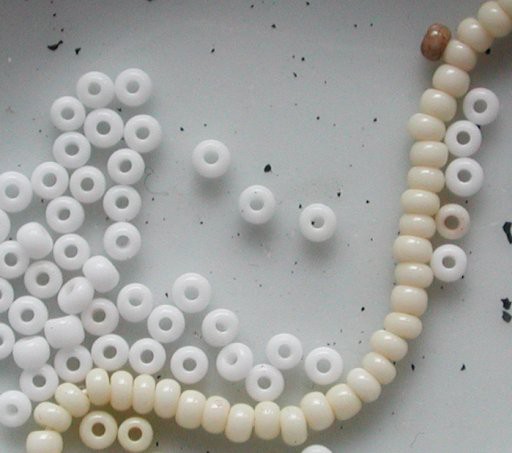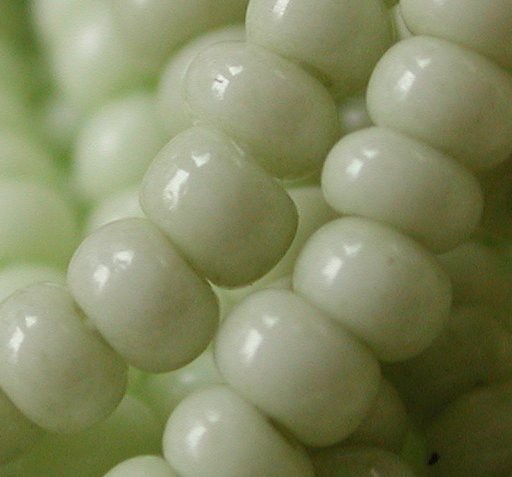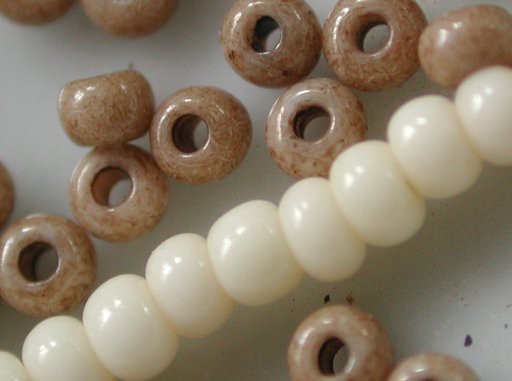Okay, I'm a bead snob. I admit it. I don't like to use wood or plastic beads (for the most part) and I tend to avoid dyed beads. I don't like them, because as a rule the durability of the color of the stone or glass underneath can be measured in centuries or millennia, but dye can fade in years or decades. Because I can in fact buy glass in ivories and celadon greens, I want to purchase hanks of seed beads in those colors too. Unfortunately for me, many manufacturers find it easier to dye their glass seed beads than to make them out of colored glass.
If this is an issue for you too, the first thing to do is look at the holes: usually the dye collects there, and it's easier to detect. A 10x loupe is also very helpful. I bought these beads hoping they weren't dyed (and the seller assured me they weren't) but I was skeptical.
But then it occurred to me that I have access to testing methods outside of those available to most beadworkers: I could heat and melt the beads into a molten state, then make a bead out of them. If the new bead was the same color as the old ones, then voila, the color went thru the glass. To keep the seed beads from shocking, I loaded them up in a little lid-on-a-stick that I use for preheating, and then went off to heat some tea.
When I came back, my studio stank. Not a good sign, if 20 10/0 seed beads could smell up a whole room, despite 870cfm ventilation. When I pulled them out to begin melting them down, my pretty light ivory had turned to a muddy tan. About that time, my concentrator, evidently revolted by the idea of melting down lowly seed beads, stopped dead. Eventually I remembered it had a reset button & got it going again, but in the meantime, without any way to cook glass, I stuck the seed beads back in the kiln and annealed them along with the satake beads I'd already made for the day.

Ivory (on string) is original color. White is what happened after a standard lead glass (anneal point 890 deg; half an hour soak) annealing schedule. The brown bead in the upper right hand corner is one that evidently didn't make it back into the kiln for the second reheat, so I left it here for comparative puposes.
Torching the seed beads turned out to be totally unnecessary for my test: when I got the beads out, the organic coating had completely burned away, leaving me with some nice plain white beads. And that was with the hank that looked least like to have been dyed. My hopes for the other beads plummeted. Ah well. All my dyed hanks have been going into the ‘french beaded flower’ practice pile. French beaded flower making uses up lots of seed beads. And the wire oxidizes into powder after a century or so anyway. (At this point you're thinking, and nylon thread doesn't? But as a rule I put a lot more time into woven projects than I do wired ones; so I want better beads in them.)

If you don't have a loupe, a good macro lens works almost as well...that blotchy look on the bead surface is usually a bad sign. (This is a totally unretouched picture, cropped at ‘life’ size)
file originally created 30apr05
Unless otherwise noted, text, image and objects depicted therein copyright 1996--present sylvus tarn.
Sylvus Tarn
